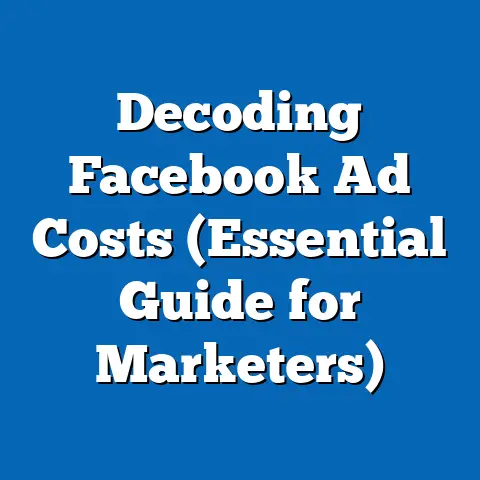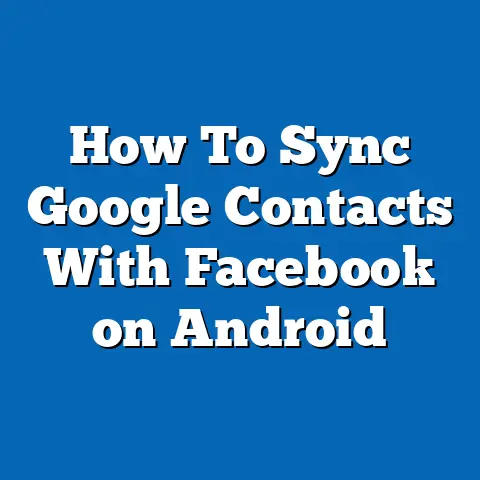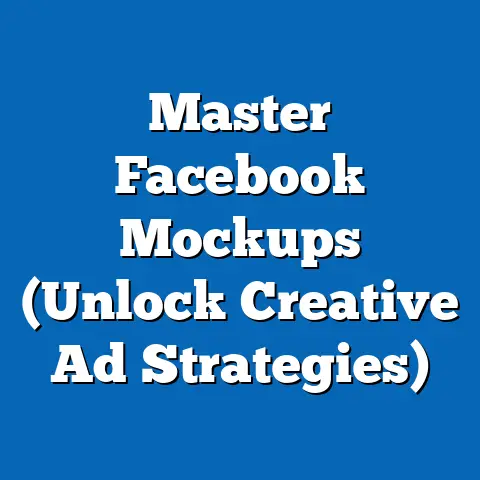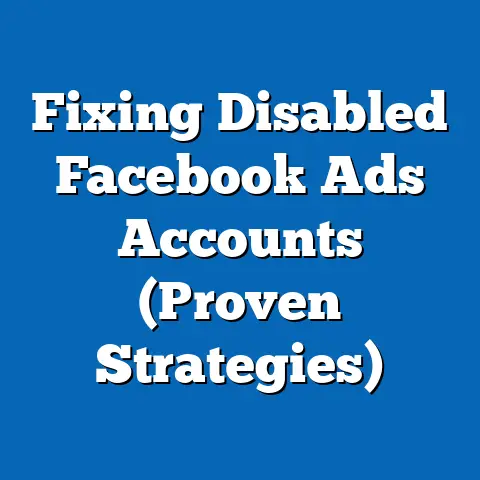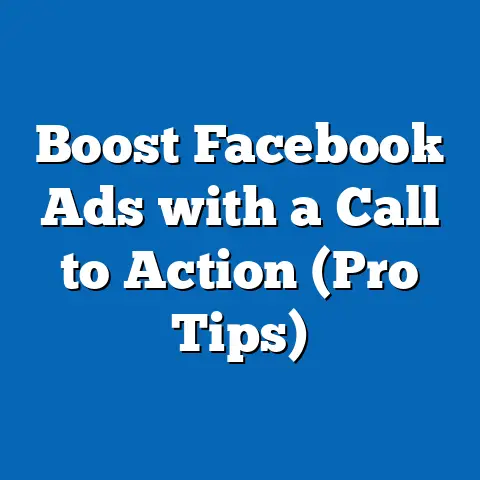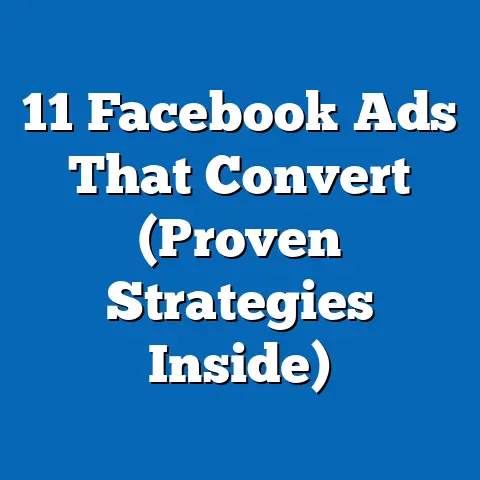Master Meta fb ad Strategies (Expert-Level Insights)
Understanding the Meta Advertising Ecosystem
Before we jump into advanced tactics, let’s establish a solid foundation. Meta, as we know, is the parent company of Facebook, Instagram, WhatsApp, and Messenger. These platforms, boasting billions of active users, offer an unparalleled opportunity for advertisers to reach a diverse and engaged audience.
Each platform, however, has its own unique user base and engagement style. Facebook, while still dominant, tends to attract a slightly older demographic, while Instagram is the go-to for younger audiences seeking visually appealing content. Understanding these nuances is crucial for tailoring your message and creative to resonate with the right people.
Navigating the Ads Manager can feel overwhelming at first, but it’s the central hub for all your advertising activities. Think of it as your command center. From creating campaigns and ad sets to defining your audience and tracking your results, the Ads Manager puts everything you need at your fingertips.
Fast Insight: Familiarize yourself with the Ads Manager interface. Explore the different tabs and options. The more comfortable you are navigating the platform, the faster you’ll be able to implement and optimize your campaigns. I personally recommend starting with a simple campaign objective like website traffic to get a feel for the process.
Takeaway: Meta offers a powerful advertising ecosystem, but success hinges on understanding the platform-specific nuances and mastering the Ads Manager.
Key Components of Successful Facebook Ads
Now that we have a grasp on the ecosystem, let’s break down the core elements that make a Facebook ad truly effective. Think of these as the pillars that support your entire advertising strategy:
-
Targeting: This is where you define who you want to see your ads. Facebook offers a plethora of targeting options, allowing you to narrow your audience based on demographics (age, gender, location), interests, behaviors, and connections. The key is to be specific and relevant. Don’t cast too wide a net, or you’ll waste your budget on reaching people who are unlikely to convert.
- Custom Audiences: These are gold. You can create custom audiences by uploading your customer list, using website traffic data (via the Facebook Pixel), or leveraging app activity. This allows you to target people who have already interacted with your business, making them more likely to convert.
- Lookalike Audiences: This is where Facebook’s AI shines. By using your custom audience as a seed, Facebook can identify users who share similar characteristics and behaviors. This allows you to expand your reach to new potential customers who are likely to be interested in your product or service.
-
Creative: Your ad creative is what grabs attention and conveys your message. It includes the visuals (images or videos), the ad copy (the text), and the call-to-action (the button that prompts users to take action).
- Visuals: Use high-quality, eye-catching images or videos that are relevant to your target audience and your offer. Consider using bright colors, engaging visuals, and a clear focal point.
- Ad Copy: Write concise and compelling ad copy that highlights the benefits of your product or service. Use persuasive language, address your audience’s pain points, and create a sense of urgency.
- Call-to-Action (CTA): Your CTA should be clear, concise, and action-oriented. Use verbs like “Shop Now,” “Learn More,” “Sign Up,” or “Get Started.”
-
Budgeting: Setting the right budget is crucial for maximizing your ROI. Facebook offers two main bidding strategies:
- Cost-Per-Click (CPC): You pay each time someone clicks on your ad. This is a good option if you’re focused on driving traffic to your website or landing page.
- Cost-Per-Impression (CPM): You pay for every 1,000 impressions your ad receives. This is a good option if you’re focused on brand awareness or reaching a large audience.
Fast Tip: A/B testing is your secret weapon. Run multiple versions of your ads with slight variations in targeting, creative, or bidding strategies. Track the results and optimize your campaigns based on the data. I’ve seen campaigns double their performance simply by tweaking the headline or the CTA.
Targeting: This is where you define who you want to see your ads. Facebook offers a plethora of targeting options, allowing you to narrow your audience based on demographics (age, gender, location), interests, behaviors, and connections. The key is to be specific and relevant. Don’t cast too wide a net, or you’ll waste your budget on reaching people who are unlikely to convert.
- Custom Audiences: These are gold. You can create custom audiences by uploading your customer list, using website traffic data (via the Facebook Pixel), or leveraging app activity. This allows you to target people who have already interacted with your business, making them more likely to convert.
- Lookalike Audiences: This is where Facebook’s AI shines. By using your custom audience as a seed, Facebook can identify users who share similar characteristics and behaviors. This allows you to expand your reach to new potential customers who are likely to be interested in your product or service.
Creative: Your ad creative is what grabs attention and conveys your message. It includes the visuals (images or videos), the ad copy (the text), and the call-to-action (the button that prompts users to take action).
- Visuals: Use high-quality, eye-catching images or videos that are relevant to your target audience and your offer. Consider using bright colors, engaging visuals, and a clear focal point.
- Ad Copy: Write concise and compelling ad copy that highlights the benefits of your product or service. Use persuasive language, address your audience’s pain points, and create a sense of urgency.
- Call-to-Action (CTA): Your CTA should be clear, concise, and action-oriented. Use verbs like “Shop Now,” “Learn More,” “Sign Up,” or “Get Started.”
Budgeting: Setting the right budget is crucial for maximizing your ROI. Facebook offers two main bidding strategies:
- Cost-Per-Click (CPC): You pay each time someone clicks on your ad. This is a good option if you’re focused on driving traffic to your website or landing page.
- Cost-Per-Impression (CPM): You pay for every 1,000 impressions your ad receives. This is a good option if you’re focused on brand awareness or reaching a large audience.
Fast Tip: A/B testing is your secret weapon. Run multiple versions of your ads with slight variations in targeting, creative, or bidding strategies. Track the results and optimize your campaigns based on the data. I’ve seen campaigns double their performance simply by tweaking the headline or the CTA.
Takeaway: A successful Facebook ad campaign requires a strategic combination of precise targeting, compelling creative, and smart budgeting. A/B testing is essential for continuous optimization.
Advanced Targeting Techniques
Now, let’s take your targeting skills to the next level. Beyond the basic demographics and interests, Facebook offers a range of advanced targeting techniques that can give you a significant edge:
-
Behavioral Targeting: Facebook tracks users’ online behavior, including the pages they visit, the apps they use, and the purchases they make. This allows you to target users based on their specific interests and activities. For example, you could target users who have recently purchased running shoes or who have expressed interest in fitness.
-
Retargeting: This is one of the most powerful targeting techniques available. Retargeting allows you to show ads to people who have previously interacted with your business, such as visiting your website, adding items to their cart, or watching a video. This is a highly effective way to re-engage potential customers and drive conversions.
- Setting up Retargeting: The key to effective retargeting is the Facebook Pixel. This is a small piece of code that you install on your website. It tracks user activity and allows you to create retargeting audiences based on specific actions.
-
Dynamic Ads: These ads personalize content based on user interests and interactions. For example, if someone has viewed a specific product on your website, you can show them a dynamic ad featuring that product. This is a highly effective way to drive sales and increase conversion rates.
- Example: An e-commerce store can use dynamic ads to show users the exact products they viewed on the website, along with similar recommendations.
Behavioral Targeting: Facebook tracks users’ online behavior, including the pages they visit, the apps they use, and the purchases they make. This allows you to target users based on their specific interests and activities. For example, you could target users who have recently purchased running shoes or who have expressed interest in fitness.
Retargeting: This is one of the most powerful targeting techniques available. Retargeting allows you to show ads to people who have previously interacted with your business, such as visiting your website, adding items to their cart, or watching a video. This is a highly effective way to re-engage potential customers and drive conversions.
- Setting up Retargeting: The key to effective retargeting is the Facebook Pixel. This is a small piece of code that you install on your website. It tracks user activity and allows you to create retargeting audiences based on specific actions.
Dynamic Ads: These ads personalize content based on user interests and interactions. For example, if someone has viewed a specific product on your website, you can show them a dynamic ad featuring that product. This is a highly effective way to drive sales and increase conversion rates.
- Example: An e-commerce store can use dynamic ads to show users the exact products they viewed on the website, along with similar recommendations.
Expert-Level Insight: Data is your best friend. Continuously analyze your ad performance and use the insights to refine your targeting. Pay attention to which audiences are converting at the highest rates and focus your budget on those segments. I’ve found that layering multiple targeting options can significantly improve ad performance. For instance, targeting users who are interested in “yoga” AND have recently purchased “fitness apparel” can yield much better results than targeting users who are simply interested in “yoga.”
Takeaway: Advanced targeting techniques, like behavioral targeting, retargeting, and dynamic ads, can significantly improve your ad performance and ROI. Data analysis is crucial for continuous refinement.
Crafting High-Impact Ad Creatives
Targeting is essential, but even the most precisely targeted ad will fail if the creative doesn’t resonate with the audience. Think of your ad creative as the bait that lures potential customers in. Here’s how to craft high-impact ad creatives that grab attention and drive action:
-
Storytelling: People connect with stories. Weaving a narrative into your ads can engage users emotionally and make your message more memorable. Instead of simply listing the features of your product, tell a story about how it solves a problem or improves someone’s life.
-
Visuals: In the fast-paced world of social media, visuals are king. Use eye-catching images and videos that are relevant to your target audience and your offer.
- Tips: Use bright colors, engaging visuals, and a clear focal point. Experiment with different video formats, such as short-form videos, animated explainers, or user-generated content. Stay updated on the latest trends in video ads, such as vertical videos and interactive ads.
-
Copywriting: Your ad copy should be concise, compelling, and action-oriented.
- Strategies: Highlight the benefits of your product or service, address your audience’s pain points, and create a sense of urgency. Use persuasive language and strong calls to action. Keep it short and sweet. People are scrolling quickly, so you need to grab their attention in the first few seconds.
Storytelling: People connect with stories. Weaving a narrative into your ads can engage users emotionally and make your message more memorable. Instead of simply listing the features of your product, tell a story about how it solves a problem or improves someone’s life.
Visuals: In the fast-paced world of social media, visuals are king. Use eye-catching images and videos that are relevant to your target audience and your offer.
- Tips: Use bright colors, engaging visuals, and a clear focal point. Experiment with different video formats, such as short-form videos, animated explainers, or user-generated content. Stay updated on the latest trends in video ads, such as vertical videos and interactive ads.
Copywriting: Your ad copy should be concise, compelling, and action-oriented.
- Strategies: Highlight the benefits of your product or service, address your audience’s pain points, and create a sense of urgency. Use persuasive language and strong calls to action. Keep it short and sweet. People are scrolling quickly, so you need to grab their attention in the first few seconds.
Examples of Successful Ads:
- Dollar Shave Club: Their humorous and relatable video ads went viral, showcasing their value proposition in a memorable way. Key takeaway: inject personality and humor into your ads.
- Airbnb: Their ads often feature stunning visuals of unique accommodations, appealing to travelers’ desire for authentic experiences. Key takeaway: showcase the unique benefits of your product or service.
- Nike: Their ads focus on inspiring stories and empowering messages, connecting with athletes on an emotional level. Key takeaway: tell a story that resonates with your audience’s values.
Takeaway: High-performing ad creatives combine storytelling, compelling visuals, and persuasive copywriting to engage users emotionally and drive action. Analyze successful ads in your industry to identify what works and adapt those strategies to your own campaigns.
Measuring Success and Optimization
You’ve launched your campaign, the ads are running, but how do you know if they’re actually working? Measuring success and optimizing your campaigns is crucial for maximizing your ROI. Here are some key performance indicators (KPIs) to track:
- Conversion Rates: The percentage of users who take a desired action, such as making a purchase, signing up for a newsletter, or filling out a form.
- Click-Through Rates (CTR): The percentage of users who click on your ad after seeing it.
- Engagement Rates: The percentage of users who interact with your ad, such as liking, commenting, or sharing.
- Cost-Per-Click (CPC): The average cost you pay for each click on your ad.
- Cost-Per-Acquisition (CPA): The average cost you pay to acquire a new customer.
- Return on Ad Spend (ROAS): The amount of revenue you generate for every dollar you spend on advertising.
Using Facebook Analytics: Facebook Analytics provides a wealth of data about your ad performance. You can track key metrics, identify trends, and gain insights into your audience’s behavior. Use this data to make informed decisions about how to optimize your campaigns.
Fast Insights: Don’t just set it and forget it. Regularly monitor your ad performance and make adjustments as needed. If you see that a particular ad is underperforming, try tweaking the creative, targeting, or bidding strategy. I recommend checking your metrics at least once a day, especially during the initial stages of a campaign. Look for trends and patterns that can inform your optimization efforts.
Takeaway: Measuring success and optimizing your campaigns is essential for maximizing your ROI. Track key performance indicators, use Facebook Analytics to gain insights, and make regular adjustments based on the data.
Conclusion
Mastering Meta FB ad strategies is no longer a luxury; it’s a necessity for businesses that want to thrive in today’s competitive digital landscape. By understanding the Meta advertising ecosystem, crafting compelling ad creatives, leveraging advanced targeting techniques, and continuously measuring and optimizing your campaigns, you can achieve quick and effective results. I’ve shared with you the insights that have helped me drive success for countless clients. Now, it’s your turn to put these strategies into action. Don’t be afraid to experiment, test new ideas, and continuously refine your approach. The world of Facebook advertising is constantly evolving, so it’s important to stay curious, stay informed, and never stop learning. Embrace the challenge, take actionable steps, and watch your advertising game soar to new heights!

